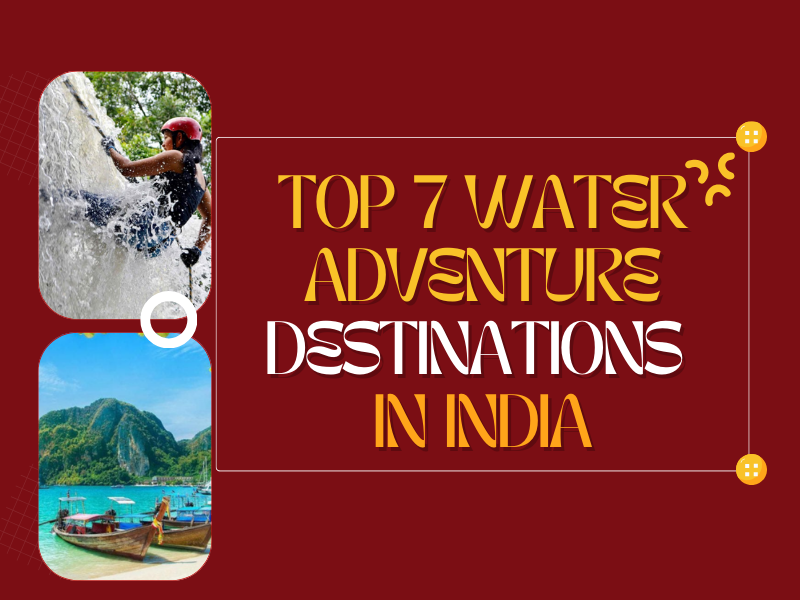India, a land of diverse landscapes and vibrant cultures, offers an array of water adventure destinations that cater to every thrill-seekers desires. From the mighty Himalayan Rivers to the crystal-clear waters of the Indian Ocean, this country promises an unforgettable aquatic experience. Whether you are a seasoned adventurer or a novice seeking new thrills, these top 7 water adventure destinations in India will quench your thirst for excitement and leave you craving more.
Best Water Adventure Destinations
1. Rishikesh, Uttarakhand

The white water Rafting capital Nestled in the foothills of the Himalayas, Rishikesh is a mecca for adventure enthusiasts. The turbulent waters of the Ganga River offer an adrenaline-pumping white water rafting experience like no other. Navigate through Class III and IV rapids, surrounded by stunning canyon landscapes, as you paddle through the roaring currents. Rishikesh also boasts excellent opportunities for kayaking, rock climbing, and camping along the riverbanks.
2. Andaman Islands

Underwater Paradise for Scuba Diving and Snorkelling, The Andaman Islands, an idyllic archipelago in the Bay of Bengal, is a paradise for scuba divers and snorkelers. Explore the vibrant coral reefs teeming with marine life, including colourful fish, sea turtles, and mesmerizing underwater landscapes. The clear, warm waters of Havelock Island, Elephant Beach, and North Bay Island offer some of the country’s best diving and snorkelling experiences.
3. Goa

Surf’s up at the Beaches Goa, the beach capital of India, is not just about sun, sand and parties. It’s also a haven for surfers and water sports enthusiasts. Catch the perfect waves at Anjuna Beach, Vagator Beach, and Ashvem Beach, where the swells are ideal for both beginners and experienced surfers. Beyond surfing, Goa offers opportunities for jet skiing, banana boat rides, and parasailing, ensuring a thrilling day on the water.
4. Nohkalikai Falls, Meghalaya

Waterfall Rappelling Adventure for those seeking an adrenaline rush unlike any other, Nohkalikai Falls in Meghalaya offers an exhilarating waterfall rappelling experience. Descend the fourth-highest waterfall in India, plunging 1,115 feet down the misty cascades, surrounded by lush greenery and breath-taking vistas. This adventure requires skill, courage, and a sense of adventure that few can match.
5. Alappuzha, Kerala

Serene Backwater Exploration Alappuzha, known as the Venice of the East, offers a serene water adventure experience. Experience the iconic Kerala backwaters by traditional kettuvallam, gliding through the narrow canals and observing the local life and lush greenery along the banks. Kayaking and canoeing are also popular activities in this picturesque destination.
6. Thekkady, Kerala

Immerse yourself in the natural beauty of Thekkady, home to the famous Periyar Tiger Reserve. Embark on a bamboo rafting adventure along the Periyar River, drifting through the pristine wilderness while watching for elephants, deer, and other wildlife. This unique experience combines adventure with nature appreciation, creating lasting memories.
7. Rameswaram, Tamil Nadu

Rameswaram, often considered a renowned pilgrimage site, offers a unique blend of spirituality and water adventures. After paying homage to the sacred temples, indulge in thrilling water sports like scuba diving, snorkelling, and sea walks along the coastal waters. The crystal-clear waters and vibrant marine life make Rameswaram a must-visit destination for water enthusiasts.
Conclusion
India’s water adventure destinations are a true testament to the country’s diverse landscape and rich cultural heritage. From the adrenaline-fueled white water rafting in Rishikesh to the serene backwater explorations in Alappuzha, these destinations offer something for every adventurer.





























